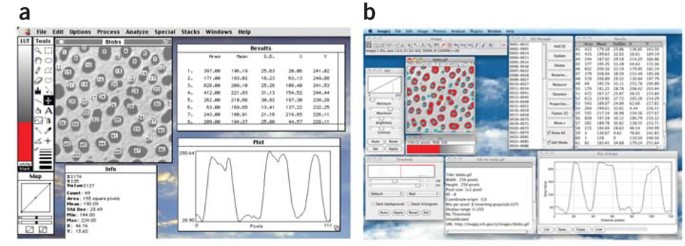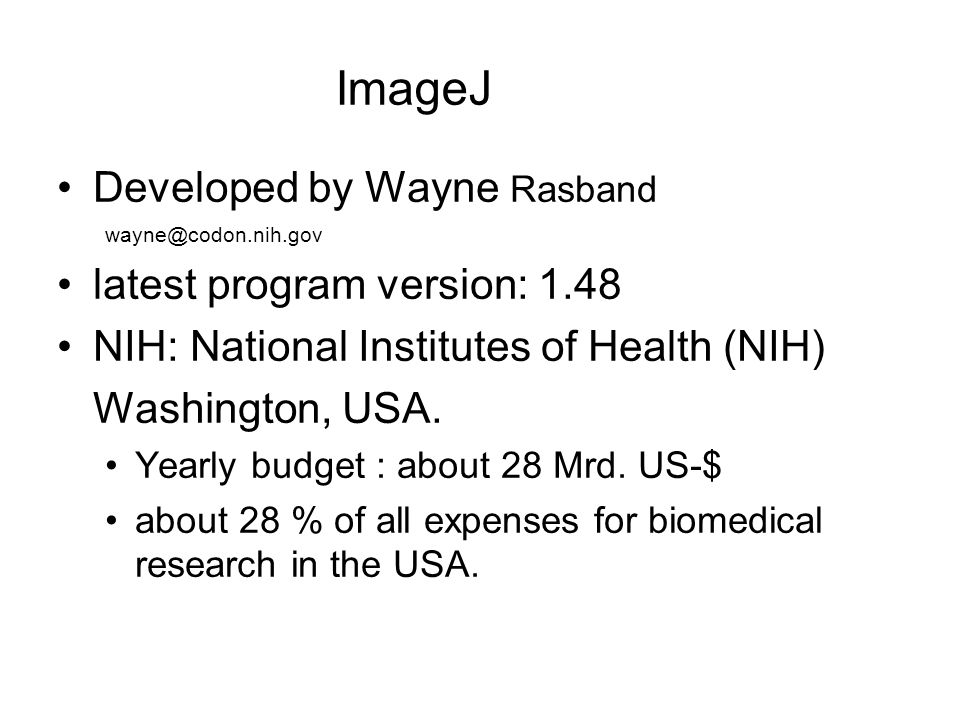

It does geometric transformations such as scaling, rotation, and flips. It supports standard image processing functions such as logical and arithmetical operations between images, contrast manipulation, convolution, Fourier analysis, sharpening, smoothing, edge detection, and median filtering. It can create density histograms and line profile plots.

ImageJ can calculate area and pixel value statistics of user-defined selections and intensity-thresholded objects.
#IMAGEJ SOFTWARE NIH SERIES#
ImageJ supports image stacks, a series of images that share a single window, and it is multithreaded, so time-consuming operations can be performed in parallel on multi-CPU hardware. It can read many image file formats, including TIFF, PNG, GIF, JPEG, BMP, DICOM, and FITS, as well as raw formats. ImageJ can display, edit, analyze, process, save, and print 8-bit color and grayscale, 16-bit integer, and 32-bit floating point images. The project developer, Wayne Rasband, retired from the Research Services Branch of the NIH's National Institute of Mental Health in 2010, but continues to develop the software.
#IMAGEJ SOFTWARE NIH CODE#
The source code for ImageJ is freely available from the NIH. Downloadable distributions are available for Microsoft Windows, the classic Mac OS, macOS, Linux, and the Sharp Zaurus PDA. ImageJ can be run as an online applet, a downloadable application, or on any computer with a Java 5 or later virtual machine.
ImageJ's plugin architecture and built-in development environment has made it a popular platform for teaching image processing. User-written plugins make it possible to solve many image processing and analysis problems, from three-dimensional live-cell imaging to radiological image processing, multiple imaging system data comparisons to automated hematology systems. Custom acquisition, analysis and processing plugins can be developed using ImageJ's built-in editor and a Java compiler. ImageJ was designed with an open architecture that provides extensibility via Java plugins and recordable macros. Its first version, ImageJ 1.x, is developed in the public domain, while ImageJ2 and the related projects SciJava, ImgLib2, and SCIFIO are licensed with a permissive BSD-2 license. ImageJ is a Java-based image processing program developed at the National Institutes of Health and the Laboratory for Optical and Computational Instrumentation (LOCI, University of Wisconsin).


 0 kommentar(er)
0 kommentar(er)
